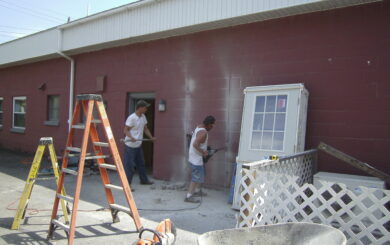Latest News
UDC Releases Annual Code Enforcement Report, Shows Pandemic Impacts
NARROWSBURG – The Upper Delaware Council (UDC) announces the availability of the annual Upper Delaware Scenic & Recreational Corridor Code Enforcement Activities Report. Data collected demonstrates the impacts that the coronavirus pandemic had on building and development activities in the river corridor during 2020.
Established in 1988, the UDC operates under a Cooperative Agreement with the National Park Service (NPS) to oversee implementation of the River Management Plan (RMP).
One required task is for the UDC to perform an annual review of land use practices in each of its 13 participating New York towns and Pennsylvania townships to ensure that the goals, principles, and objectives of the RMP are being met. NPS, which receives the advisory report, is responsible for monitoring enforcement within the two non-participating townships that comprise the Upper Delaware unit of the National Wild and Scenic Rivers System.
The UDC’s review assesses each member town/township’s enforcement program within the designated river corridor boundary by examining building permits issued, variances granted, and any patterns of ordinances, code amendments, or project approvals which may impact the river or contradict the provisions set forth in the RMP.
A comparison of previous annual reports showed that the amount of permits issued more than doubled in the river corridor between 2016 and 2019 before the pandemic.
The 2020 statistics revealed that the number of building permits issued decreased by over half, with Lackawaxen Township being an outlier. This was likely due to the closures and quarantine periods during spring and summer 2020, which are typically the busiest building seasons in the Northeast.
The pandemic’s impact was observed in the local municipalities not only through little to no activity occurring, but also in those with more activity. For example, in the Towns of Tusten and Lumberland, most permits issued for new construction of a single-family home had an applicant with a primary address in the New York City area.
The migration of residents from metropolitan areas to the Upper Delaware for their full-time residence was anticipated and this activity aligns with that prediction.
Additionally, the type of permit requests for garage additions, decks, electrical and septic updates seen throughout the corridor suggest evidence of property owners outfitting their homes for increased use.
Homes that may have been seasonally occupied before the pandemic were becoming full-time residences, potentially due to the ability to work remotely and other factors driving people away from more congested cities.
The full 2020 report compiled by UDC Resources and Land Use Specialist Shannon Cilento can be downloaded and viewed online at www.upperdelawarecouncil.org/publications/.

